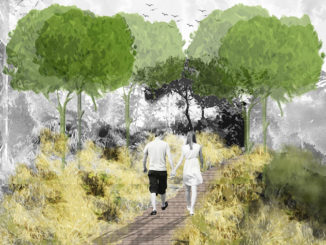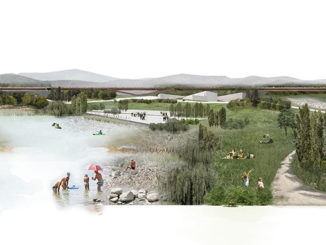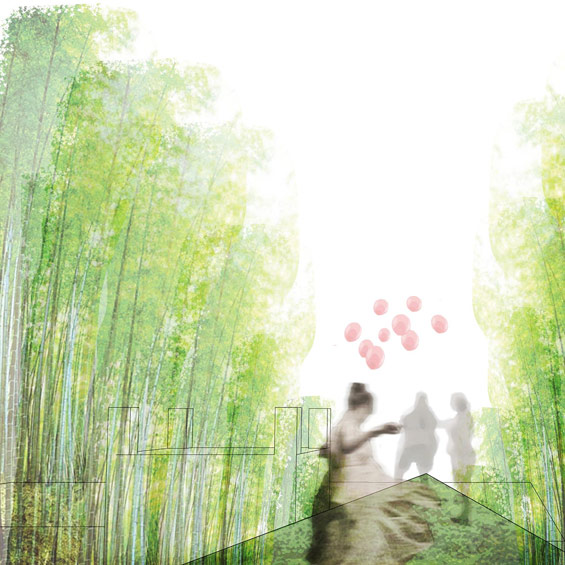
Cemeteries in North America almost exclusively all follow the same model – the Garden Cemetery of 1831 Mount Auburn, based on a concept of vast naturalized space. It is no longer 1831 and local and world issues have shifted along with our values and our cultural community. The traditional design has served its purpose in most major cities on the continent. It is pervasive and it is time to consider its effects and consequences on the city. Our modern communities are faced with new challenges unforeseen 200 years ago, such as increased multiculturalism, densification of urban cores rather than expansion of suburbs, environmental challenges, and a shift towards a more economically polarized society.
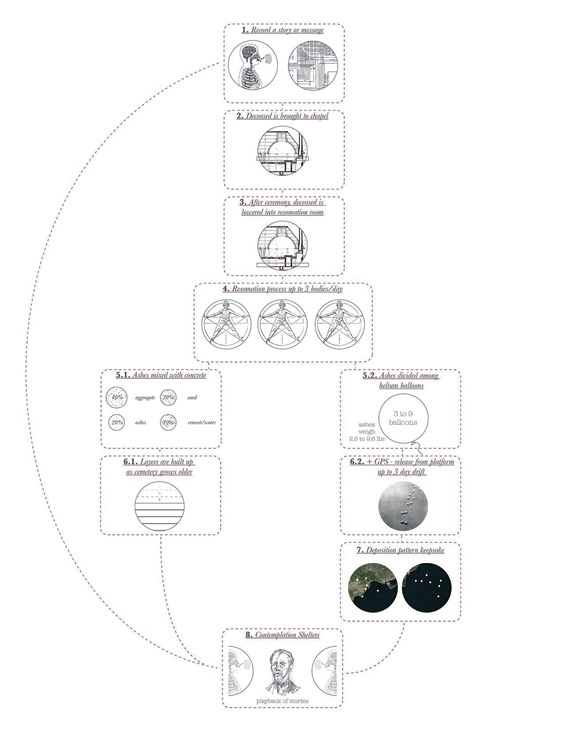
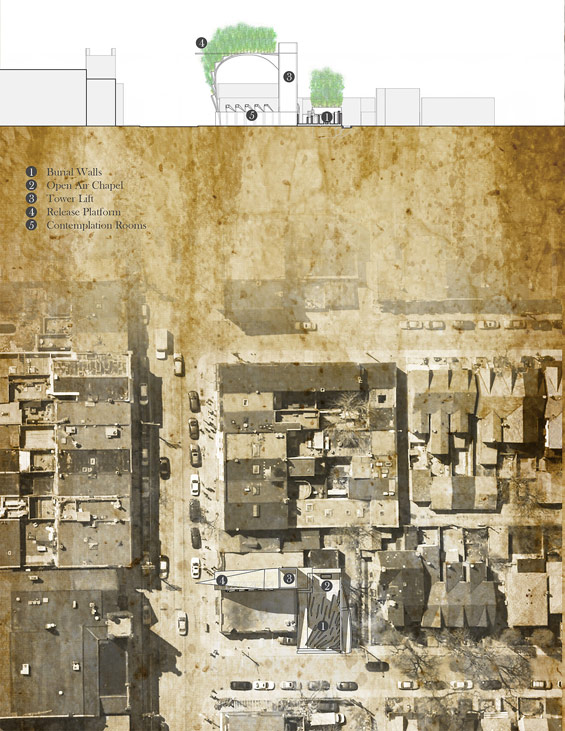
If a cemetery reflects it’s surrounding society, a new design paradigm is required for future burial grounds. A new cemetery must be sensitive ecologically, it must be inclusive of all cultures and religions, it must reflect the desires of the deceased as well as the needs of those who mourn. It will be urban. It will be accessible. It will be an important addition to our existing cemeteries and will simultaneously provide new options for those opposed to old models.
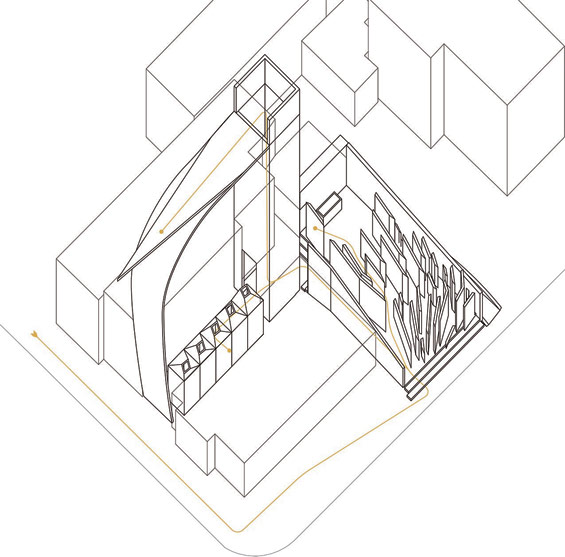
Where can we locate this new typology but within the urban fabric? In North America, there are a plethora of ‘leftover’ sites. Places forgotten or difficult to use, like alleys, highway off-ramps, and disused rail infrastructure. In this instance, the location is a small vacant laneway along one of Toronto’s busiest streets – Queen Street West.
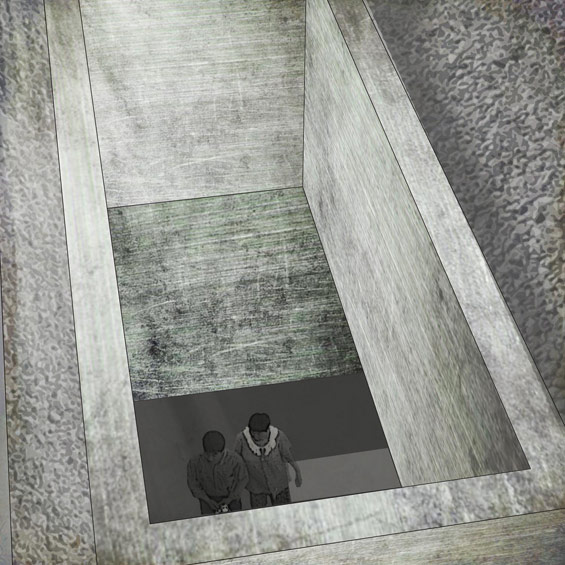
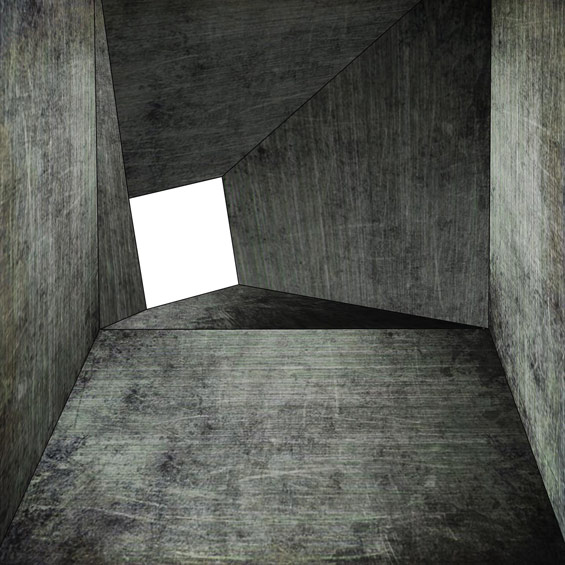
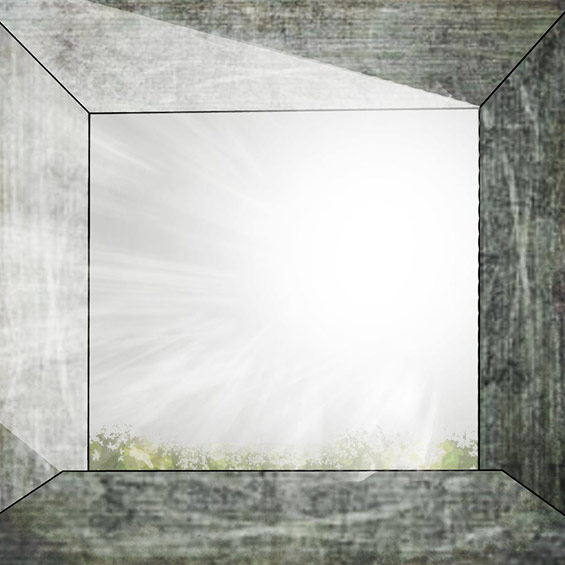
The site is a mere 196 square metres. The ‘departure’ begins with resomation – a process by which the body is dissolved and “ashes” are created from the bones. This takes place in a room beneath the main open-air chapel. After the memorial service, the body is lowered to the resomation room, which can process up to 3 bodies per day.
The deceased can be celebrated on the site by having their remains mixed into a mortar and interred in a layered wall that builds over time. Alternatively the remains can be placed in a set of helium balloons released into the air via a platform above the city. The balloons can be tracked resulting in a deposition ‘footprint’ left as a reminder and memorial showing where the balloons burst in the atmosphere. Relatives and loved ones of the deceased can take part in the ceremony of either laying the mortar to build up the wall or releasing their departed into the sky from the bamboo and moss covered platform. An open-air chapel is settled among the burial walls.
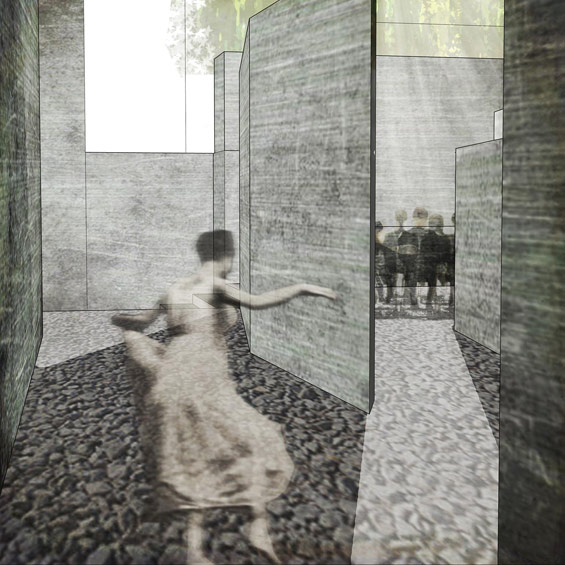
The entire journey through the site mimics life. One must wind their way among the walls to find the chapel, weave through dense bamboo to discover the end of the release platform. Throughout, there are strong punctuations of light and dark, vibrant colour or somber greys, soft and hard materials. For future visits to the site by those remembering, there are a series of contemplation rooms where one may be immersed in silence and darkness, or can hear their loved one speak back to them through a previously recorded message.
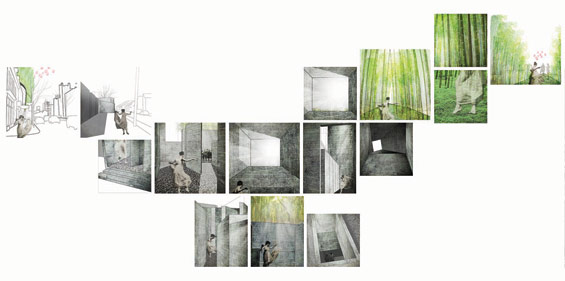
This new urban cemetery is one of three new models that seek to complement the existing burial ground. It provides another option to those seeking something different at the end of life. It uses space efficiently while retaining a calm, somber, and powerful contemplative atmosphere.

Student Project | New Urban Cemetery: Departures 1 & 2 | Tyler Allen Bradt
Project Location | Toronto, Ontario, Canada
Student | Tyler Allen Bradt
University | Daniels Faculty of Architecture, Landscape and Design, University of Toronto
MLA Thesis, 2013

